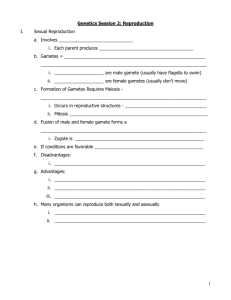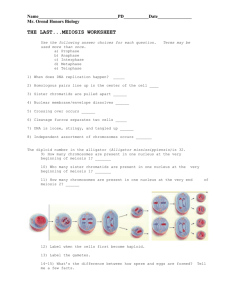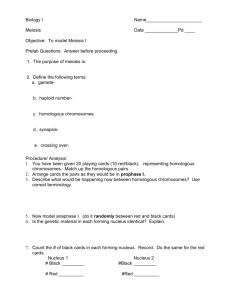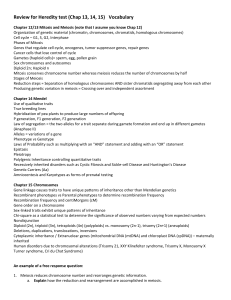Lesson 5 Abnormal Meiosis
advertisement
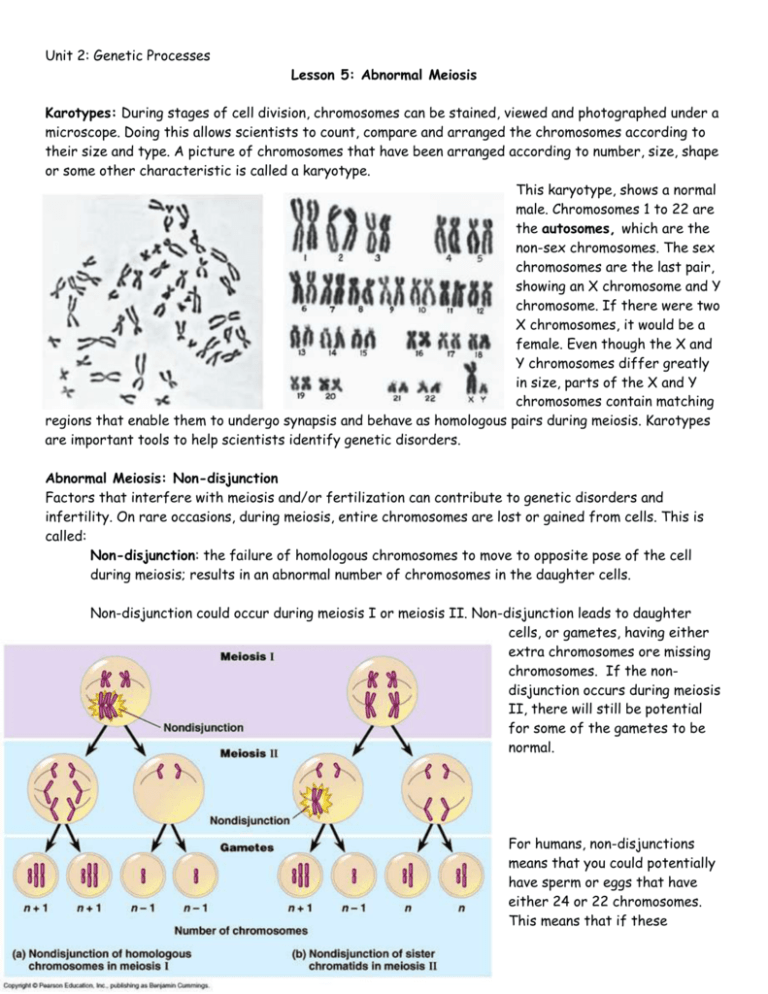
Unit 2: Genetic Processes Lesson 5: Abnormal Meiosis Karotypes: During stages of cell division, chromosomes can be stained, viewed and photographed under a microscope. Doing this allows scientists to count, compare and arranged the chromosomes according to their size and type. A picture of chromosomes that have been arranged according to number, size, shape or some other characteristic is called a karyotype. This karyotype, shows a normal male. Chromosomes 1 to 22 are the autosomes, which are the non-sex chromosomes. The sex chromosomes are the last pair, showing an X chromosome and Y chromosome. If there were two X chromosomes, it would be a female. Even though the X and Y chromosomes differ greatly in size, parts of the X and Y chromosomes contain matching regions that enable them to undergo synapsis and behave as homologous pairs during meiosis. Karotypes are important tools to help scientists identify genetic disorders. Abnormal Meiosis: Non-disjunction Factors that interfere with meiosis and/or fertilization can contribute to genetic disorders and infertility. On rare occasions, during meiosis, entire chromosomes are lost or gained from cells. This is called: Non-disjunction: the failure of homologous chromosomes to move to opposite pose of the cell during meiosis; results in an abnormal number of chromosomes in the daughter cells. Non-disjunction could occur during meiosis I or meiosis II. Non-disjunction leads to daughter cells, or gametes, having either extra chromosomes ore missing chromosomes. If the nondisjunction occurs during meiosis II, there will still be potential for some of the gametes to be normal. For humans, non-disjunctions means that you could potentially have sperm or eggs that have either 24 or 22 chromosomes. This means that if these gametes were to fertilize with a normal, haploid gamete, the resulting zygote would have the wrong number of chromosomes. Trisomy: a chromosomal abnormality in which there are three homologous chromosomes in place of a homologous pair. A trisomy occurs because a gamete containing 24 chromosomes (n + 1), instead of 23 chromosomes, fertilizes with a normal gamete (n). n + (n+1) = 2n + 1 Non-disjunction Disorders: Homework: Monosomy: a chromosomal abnormality in which there is a single chromosome in place of a homologous pair. A monosomy occurs because a gamete containing 22 chromosomes (n – 1), instead of 23 chromosomes, fertilizes with a normal gamete (n). n + (n – 1) = 2n – 1 1. Sex-determination systems are extremely diverse. Research the ways in which sex-determination occurs for chickens, turtles, crocodiles, fish, bees, ants, wasps, and earthworms. 2. What is non-disjunction and how can it lead to both trisomy and monosomy? 3. Why do you think there are more types of trisomy disorders than monosomy disorders? Solutions: 1. Answers will vary. Some examples listed below. 2. & 3.
